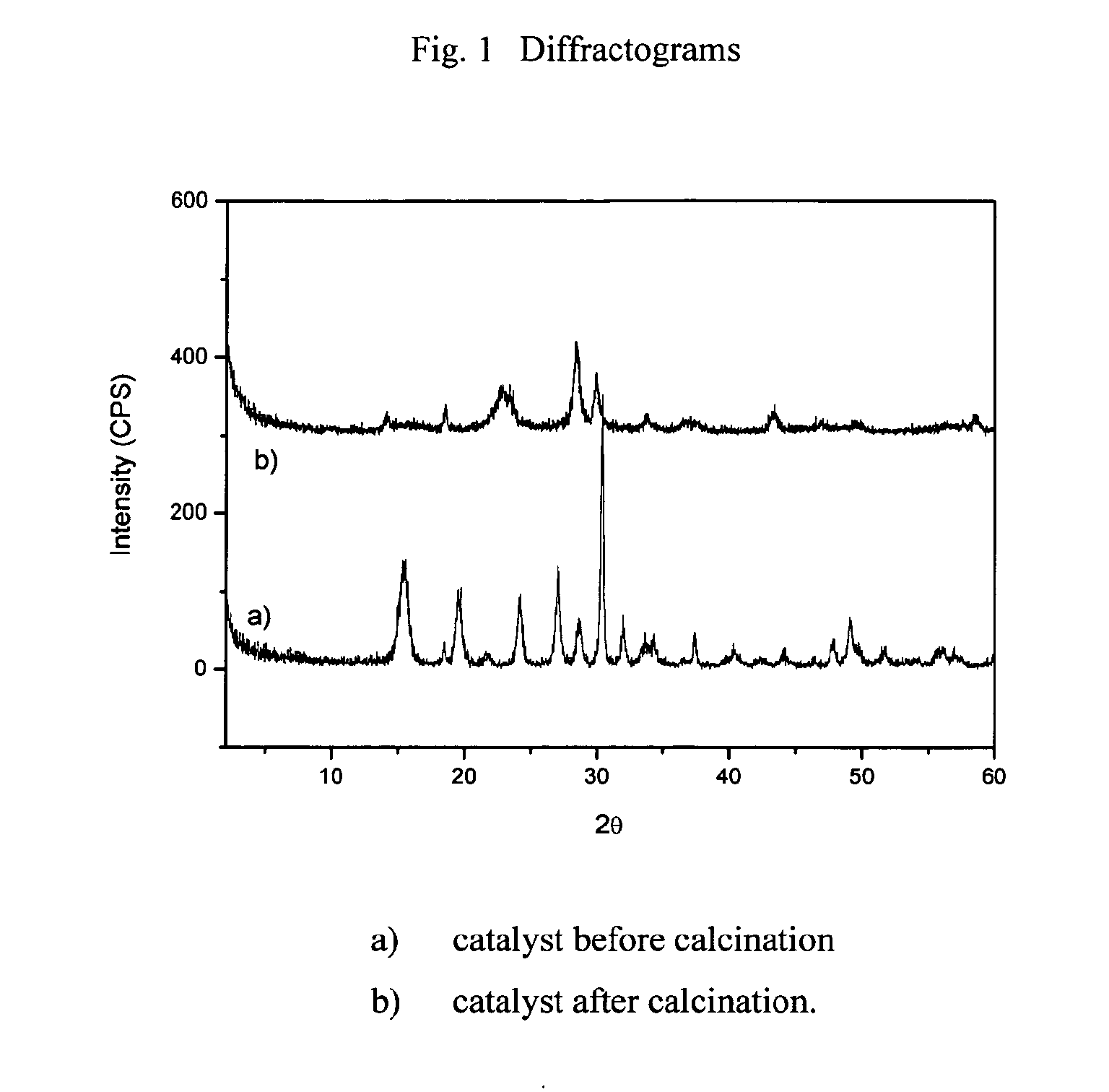Process for manufactguring acrolein from glycerol
a technology of glycerol and acrolein, which is applied in the preparation of carbonyl compounds, physical/chemical process catalysts, metal/metal-oxide/metal-hydroxide catalysts, etc., can solve the problems of reducing the application field of acrolein produced, high cost of purification of purified acrolein, and oxidation of propanaldehyde to propionic acid, etc., to achieve excellent catalytic activity ratio ratio ratio ratio ratio ratio ratio ratio ratio ratio ratio ratio ratio ratio ratio ratio ratio ratio ratio ratio ratio ratio ratio ratio ratio ratio ratio ratio ratio ratio ratio ratio ratio ratio ratio ratio ratio ratio ratio ratio ratio ratio ratio ratio ratio ratio ratio ratio ratio ratio ratio ratio ratio ratio ratio ratio ratio ratio ratio ratio ratio
- Summary
- Abstract
- Description
- Claims
- Application Information
AI Technical Summary
Benefits of technology
Problems solved by technology
Method used
Image
Examples
examples 1 to 4
[0073]In the examples, a tubular reactor formed from a Pyrex tube was used to carry out the dehydration reaction of glycerol in the gas phase at atmospheric pressure. Introduced into the reactor were between 300 and 500 mg of a catalyst to be tested, with quartz (30-50 or 50-80 mesh) so as to obtain a catalyst bed volume of 2 ml. The reactor was placed in a heated chamber maintained at the chosen reaction temperature of 280° C. The reactor was brought to the reaction temperature over 5 to 10 minutes before the reactants were introduced. The reactor was fed with a 20 wt % or 40 wt % aqueous solution of glycerol, and with nitrogen. Oxygen was also introduced in a second series of tests. The aqueous glycerol solution was vaporized in the heated chamber, then passed over the catalyst. The calculated contact time was between 0.5 and 3 s. After the reaction, the products were condensed in a trap cooled by crushed ice. Gaseous withdrawals were carried out periodically.
[0074]For each experi...
example 5
[0092]A precursor of VOHPO4.½H2O was prepared as following: Namely, 100.0 g of vanadium pentoxide (V2O5) was suspended in 1000 ml of 2-methyl-1-propanol and refluxed at 105° C. under agitation for 3 hours to reduce V2O5. In 132.0 g of 98% orthophosphoric acid powder, 250 ml of 2-methyl-1-propanol was added and dissolved under agitation at 100.
[0093]The resulting orthophosphoric acid solution (132.0 g of 98% orthophosphoric acid powder / 250 ml of 2-methyl-1-propanol) was added at 100° C. gradually into a yellow solution of vanadium prepared by the heat-reflux in 2-methyl-1-propanol and heat-reflux was continued at 105° C. After 3 hours, the reflux was stopped and cooled down to ambient temperature. The resulting catalyst precursor was filtered, washed with acetone and dried in a drier at 140° C. during one night to obtain a blue white phosphorus-vanadium complex
[0094]The resulting catalyst was evaluated in a fixed bed type reactor at ambient pressure. The catalyst powder was compresse...
example 6
[0097]Blue white dry powder obtained in Example 5 was fired in Muffle furnace in air atmosphere at 500° C. for 3 hours to obtain a light green phosphorus-vanadium complex oxide powder.
[0098]Reactivity of this powder was evaluated by the same method as Example 5. Results are shown in Table 6.
TABLE 6ReactionGlycerinAcrylicPropion-PropionictemperatureconversionAcroleinacidaldehydeacidCatalytic(° C.)ratio (%)yield (%)yield (%)yield (%)yield (%)Example 5VPO30010049.50.20.40.2(precursor)34010042.50.30.80.0Example 6VPO (after30010054.20.20.50.1firing in air)34010038.10.01.00.0
PUM
| Property | Measurement | Unit |
|---|---|---|
| temperature | aaaaa | aaaaa |
| temperature | aaaaa | aaaaa |
| temperature | aaaaa | aaaaa |
Abstract
Description
Claims
Application Information
 Login to View More
Login to View More - R&D
- Intellectual Property
- Life Sciences
- Materials
- Tech Scout
- Unparalleled Data Quality
- Higher Quality Content
- 60% Fewer Hallucinations
Browse by: Latest US Patents, China's latest patents, Technical Efficacy Thesaurus, Application Domain, Technology Topic, Popular Technical Reports.
© 2025 PatSnap. All rights reserved.Legal|Privacy policy|Modern Slavery Act Transparency Statement|Sitemap|About US| Contact US: help@patsnap.com

